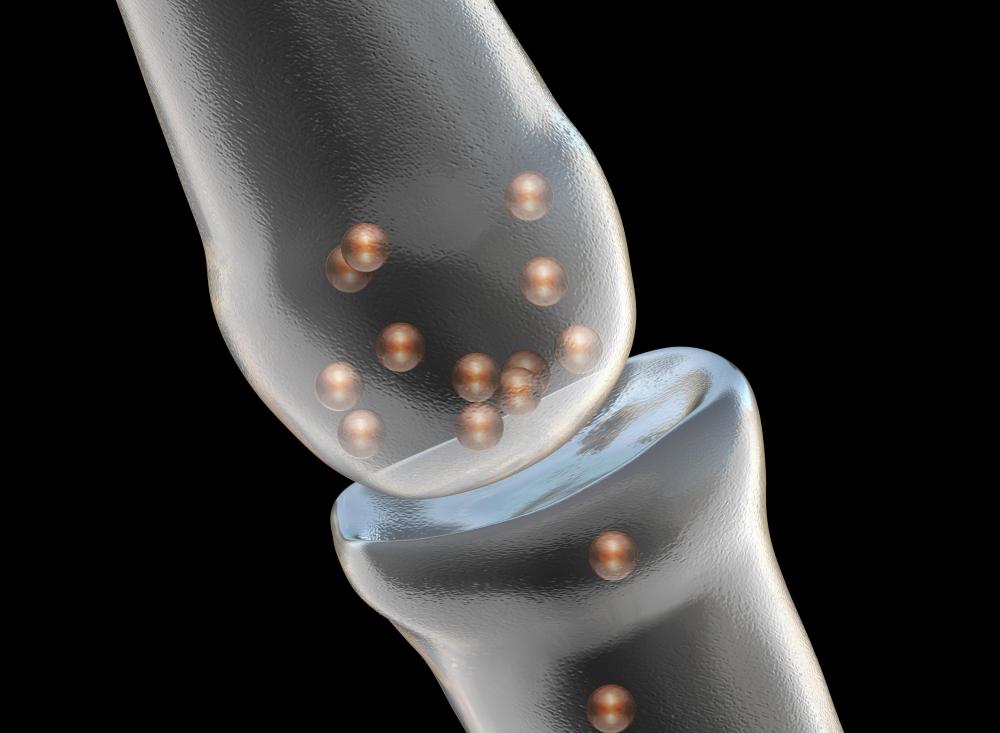At TheHealthBoard, we're committed to delivering accurate, trustworthy information. Our expert-authored content is rigorously fact-checked and sourced from credible authorities. Discover how we uphold the highest standards in providing you with reliable knowledge.
What is a Serotonin Transporter?
A serotonin transporter is an integral membrane protein found in abundance in the human brain. It moves the neurotransmitter serotonin from the space between synapses, the synaptic cleft, into presynaptic neurons. In doing this, it terminates the action of the mood-stabilizing neurotransmitter and recycles it. The neurons in the brain communicate with each other using serotonin and similar substances. The presence of this particular protein regulates the concentration of serotonin in the synapse, and changes or disruptions in the serotonin transporter system are shown to have major effects on various mental health issues.
Psychiatric disorders that deal with mood and impulse control are most affected. Some specific conditions include clinical depression, generalized social phobia, alcoholism and substance abuse, post traumatic stress disorder (PTSD), and obsessive compulsive disorder (OCD). Continuing research on the serotonin transporter system is revealing its significant role in other disorders, as well. The connection has been made between the gene that is responsible for the production of the serotonin transporter, the serotonin transporter gene (SERT), and susceptibility to these disorders. The gene comes in two lengths, or two “alleles”, and a person with even one short version is at higher risk for the associated mental health issues.

The long version of the allele has a repeating nucleotide sequence that makes more serotonin transporters. This ultimately leads to more serotonin being available for use by neurons and other serotonergic cells in the body. Research shows that a person who has two long alleles has the capability to utilize up to twice as much serotonin as a person with two short alleles. Determining the genetic variant of SERT present in a person's DNA is showing promise in determining what approach to take in treatment of an associated psychiatric disorder.

Serotonin metabolism in a specific brain region, the amygdala, facilitated by the serotonin transporter system, determines in large part how a person reacts to fear. The body’s reaction to fear is implicated in many of the aforementioned disorders. Clinical depression, a pervasive condition around the world, is oftentimes shown to be caused by prolonged negative emotions stemming from fear. Research shows that generalized social phobia and various other anxiety disorders stem from the brain's faulty or exaggerated interpretation of social events. The amygdala is responsible for interpreting fear signals in social situations, and a lack of serotonin transporters contributes to the brain region overreacting in these situations.
AS FEATURED ON:
AS FEATURED ON:














Discuss this Article
Post your comments